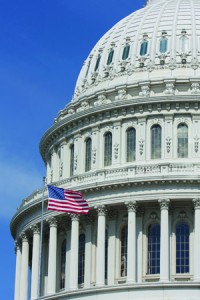
© 2016 by Steve Brawner Communications, Inc.
The campaign headquarters office where Conner Eldridge and I visit Jan. 19 is spacious but sparsely furnished – still developing, in other words, like his candidacy.
The 38-year-old former U.S. attorney knows he faces an uphill battle trying as a Democrat to win the U.S. Senate seat currently held by Sen. John Boozman, a Republican. Since 2010, the state’s allegiance has flipped. After a century and a half of Democratic dominance, Arkansas’ congressional delegation is now entirely Republican, as are all of its constitutional officers and two-thirds of its Legislature.
Eldridge, however, believes he can buck that trend. He thinks he has advantages this year that haven’t been available to the last two Democrats running for Senate: Sen. Blanche Lincoln, who won only 37 percent against Boozman in 2010; and Sen. Mark Pryor, who won 39 percent against now-Sen. Tom Cotton in 2014.
Eldridge looks at those numbers and then compares them to the University of Arkansas’ 2015 Arkansas Poll. It found an electorate split three ways: a third Republican, a third Democrat, and a third independent. Twenty-three percent of independents say they lean Democrat. Add them to the Democrats’ third, and that’s pretty much the base of Lincoln and Pryor voters.
He has to secure those votes plus find enough to win the election.
How does he think he can do that when Lincoln and Pryor fell far short? First, this will be the first contested Senate race in Arkansas in a presidential election year since 2004, when Lincoln defeated state Sen. Jim Holt.
That’s significant because presidential elections draw a higher turnout with a broader, more diverse electorate than midterms. In 2012, there were 1,078,548 ballots cast in Arkansas. In 2014, there were 226,000 fewer voters. It’s no secret that those missing voters in higher proportions are younger and/or minorities – in other words, more often Democrats. Midterms tend to draw an electorate that is older, more affluent, more conservative, and more white. Those characteristics more often describe Republicans.
Eldridge thinks some of those Democratic voters who stayed home in the 2010 and 2014 midterms will return to the polls this year and vote for him. How much is that worth? Some.
Second, Eldridge believes that Hillary Clinton, Arkansas’ former first lady, will outperform President Obama more here than she will in any other state. Obama won 37 percent here in 2012, dragging Democrats like Pryor down with him. Clinton should do better, and if she does, Eldridge should benefit. How much is that worth? Some.
Third, the Arkansas Poll revealed that despite serving in the House and Senate since 2001, Boozman remains somewhat of a low profile figure. Asked if they approved of the job he is doing, 44 percent either didn’t know or had no opinion, while his favorables were relatively low at 38 percent against even lower unfavorables of 18 percent. It’s not that Arkansans don’t like Boozman, who is an uncommonly nice and gracious person. A lot of them just don’t know him that well. Eldridge would be a new face and says he would be a more active senator.
“And I think Arkansas voters, independent voters, Republicans, Democrats, and independents, still vote the person, not the party, and are hungry, particularly at this important time, for somebody who’s going to shake things up, make a difference, work hard, and get things done,” Eldridge told me.
Finally, he draws hope from the recent Louisiana governor’s race, where a Southern Democrat won a rare victory these days against a Republican. The Democrat was an ex-Army Airborne Ranger while the Republican has a history with prostitutes. But at least it can be done.
So with a base of support somewhere close to 40 percent, plus a few percentage points because it’s a presidential year and a couple of points because it’s Hillary Clinton running and not Obama, and a bit more support from independents because he’s a new face, Eldridge thinks he can make a game of this.
We’ll see. This is a crazy year, at least in the presidential race. But Boozman still has an “R” by his name, and in the last two Senate elections in Arkansas, that’s been worth a lot.
Steve Brawner is an independent journalist in Arkansas. Email him at brawnersteve@mac.com. Follow him on Twitter at @stevebrawner.

